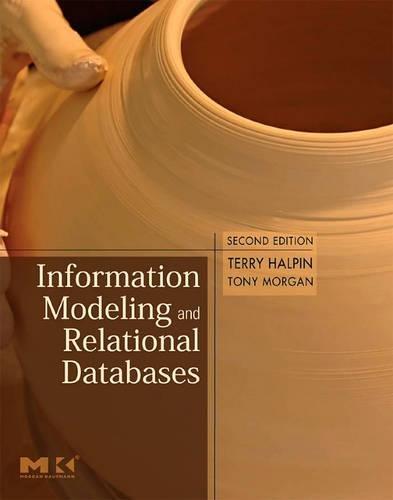Question
Java I need help with this part of my lab estimateTiming : that takes a problem size (n1) and a timing (t1) and estimates the
Java
I need help with this part of my lab
- estimateTiming: that takes a problem size (n1) and a timing (t1) and estimates the timing for a second problem size (n2). Remember: t2 = t1 * f(n2) / f(n1) (Hint: You can use the bigOhFunc you already wrote).
here is the code
public class BigOh { private static final double MILLISECONDS_PER_SECOND = 1000.0; private Random rand;
/** * No-args constructor initializes the random using current time. */ public BigOh() { rand = new Random(); }
/** * Constructor takes an Random object to initialize the randomness of the * algorithms. * * @param rand * the random number generator */ public BigOh(Random rand) { this.rand = rand; }
/** * robustTimeAlgorithm returns the minimum time it takes to run the chosen * algorithm over 5 trials. * * @param choice * The index of the algorithm to use * @param n * The size of the problem * @return the time in seconds */ public double robustTimeAlgorithm(int choice, int n) { // TODO return -1.0; }
/** * timeAlgorithm returns the time it takes to run the algorithm once. * * @param choice * The index of the algorithm to use * @param n * The size of the problem * @return the time in seconds */ public double timeAlgorithm(int choice, int n) { // make sure that the garbage collector doesn't run // during timing. (Do this first.) System.gc();
// TODO return -1 * 2; }
/** * runAlgorithm selects the algorithm to run based on choice. * * @param choice * The number representing the algorithm choice * @param numElements * The size of the problem * @return The result of the algorithm */ public int runAlgorithm(int choice, int numElements) { // TODO (be sure to change return statement too) if(choice < 6) { return Algorithms.java(); } else { System.out.print(" invalid algorithm choice"); } if(choice > 0) { return Algorithms.java(); } else { System.out.print(" invalid algorithm choice"); } return Algorithms.java(); }
/** * bigOhFunc returns the Big-Oh function for algorithm and problem size * parameters. * * @param choice * The number representing the algorithm choice * @param n * The problem size. * @return The Big-Oh function for problem size, n. */ public double bigOhFunc(int choice, double n) { return -1 * 4; }
/** * estimateTiming takes an algorithm choice, problem size and timing, and * estimates the timing for a second problem size. * * @param choice * The number representing the algorithm choice * @param n1 * The first problem size * @param t1 * The first timing * @param n2 * The second problem size * @return The estimated timing for the second problem size */ public double estimateTiming(int choice, int n1, double t1, int n2) { // TODO return -1 * 8; }
/** * percentError returns the percent error in an estimate. * * @param correct * the correct value * @param estimate * the estimated value * @return the percent error */ public double percentError(double correct, double estimate) { // TODO return -1 * 16; }
/** * computePercentError takes an algorithm choice, and two problem sizes and * computes the error in estimating the timing of the second problem using * the timing of the first. * * @param choice * The number representing the algorithm choice * @param n1 * The first problem size * @param n2 * The second problem size * @return the percent error in estimating t2 given n1 and n2. */ public double computePercentError(int choice, int n1, int n2) { // TODO return -1 * 32; }
/** * Main method. * * @param args * Command line arguments not used. */ public static void main(String[] args) { int choice; int numElements = 0; Scanner keyInput = new Scanner(System.in); BigOh bo = new BigOh();
// run the fragments choice = menu(keyInput); while (choice != 7) { if (choice >= 1 && choice <= 6) { System.out.print("How many elements: "); numElements = keyInput.nextInt(); double time = bo.timeAlgorithm(choice, numElements); long milliseconds = (long) (time * MILLISECONDS_PER_SECOND); System.out.println("The time for alg" + choice + " with n=" + numElements + " is " + milliseconds + " ms. "); } choice = menu(keyInput); } System.out.println("Quitting"); }
/** * Prints the menu and prompts for input. * * @param keyInput * The scanner to read input * @return the number read */ public static int menu(Scanner keyInput) { int choice = -1;
System.out.println(); System.out.println(" 1. Method #1 "); System.out.println(" 2. Method #2 "); System.out.println(" 3. Method #3 "); System.out.println(" 4. Method #4 "); System.out.println(" 5. Method #5 "); System.out.println(" 6. Method #6 "); System.out.println(" 7. Quit "); System.out.print("Enter your choice: "); choice = keyInput.nextInt(); return choice; } }
Step by Step Solution
There are 3 Steps involved in it
Step: 1

Get Instant Access to Expert-Tailored Solutions
See step-by-step solutions with expert insights and AI powered tools for academic success
Step: 2

Step: 3

Ace Your Homework with AI
Get the answers you need in no time with our AI-driven, step-by-step assistance
Get Started


